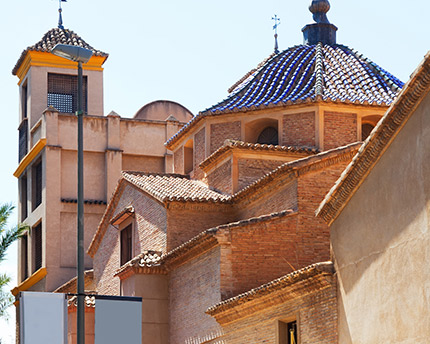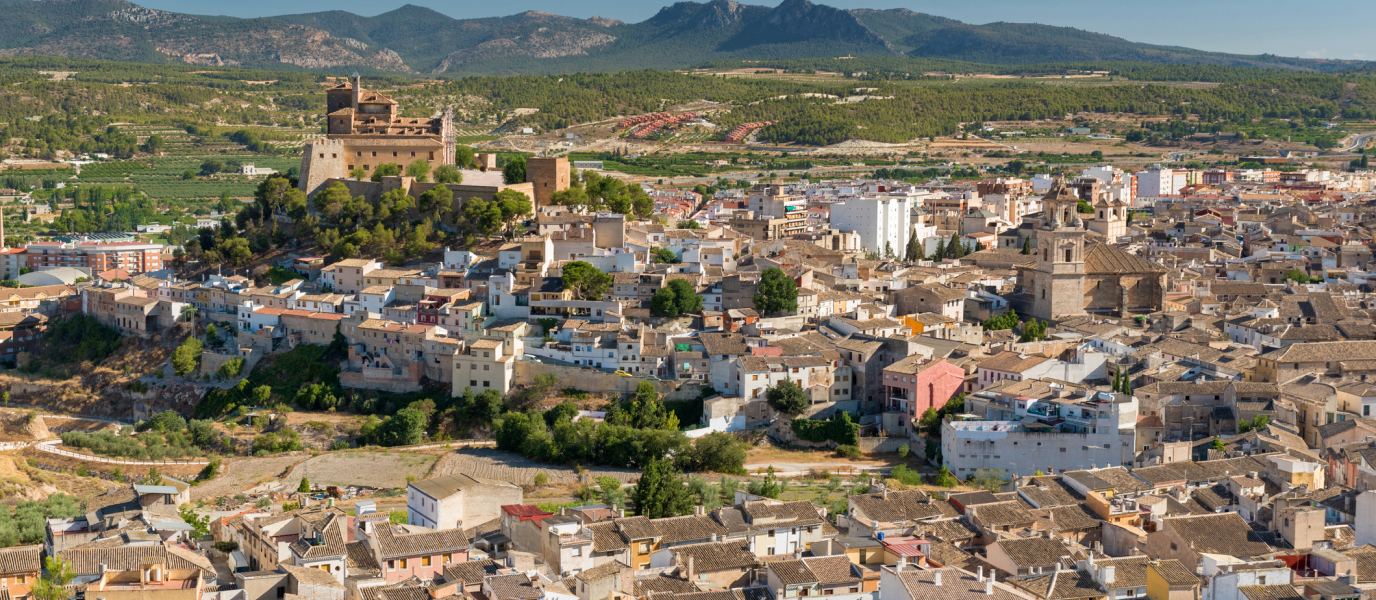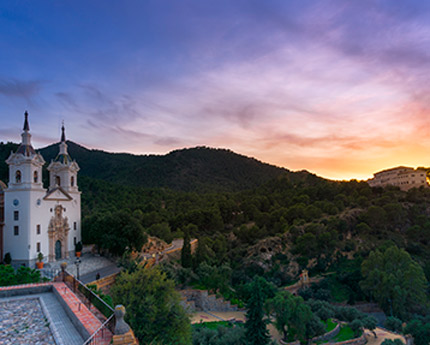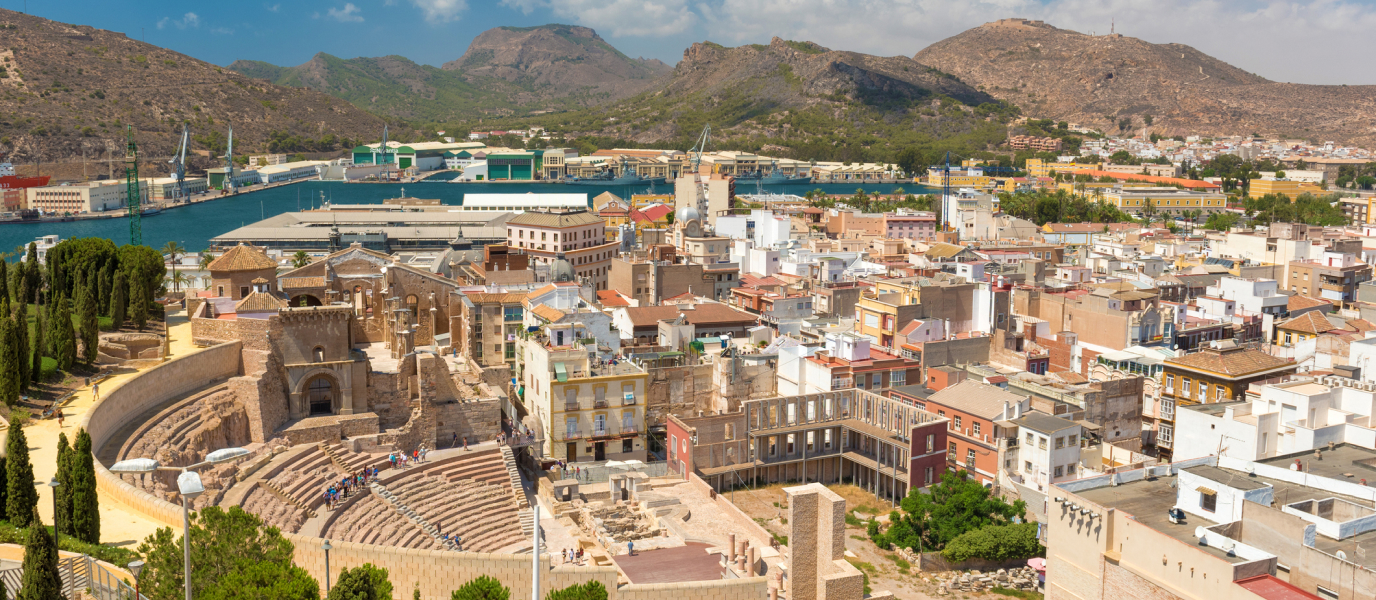This convent, in the heart of Murcia, is a unique blend of styles and spirituality, an example of how the Muslim and the Christian styles intertwined in this region’s history but in a peaceful way. The building occupied by the Poor Clares until the 20th century was built on the site of the old 13th-century Arab Al-Qasr Al-Sagir (the Alcázar Menor). But not all of it was destroyed. Inside, the remains of the Arab palace are preserved in one of the best examples of Islamic art in Murcia.
In fact, its courtyard or cloister also contains one of the oldest pools of its style in Spain, a prelude to this feature becoming prominent in Nasrid palaces, as can be seen in Granada. It’s the only palace of this design in Spain, and this structure can be seen in the 17th-century El Badi Palace in Marrakesh.
The Islamic royal family of Murcia lived in this palace and used it as a summer residence. Later on, after the Reconquest, it was the Christian kings such as Alfonso X the Wise, Violeta of Aragón, or James I the Conqueror who spent long periods of time within its walls, orchards, and courtyards.
Nowadays, it houses a museum where you can see the best archaeological remains of Islamic art in Murcia and very valuable examples of sacred art.
History of the Monastery of Santa Clara
The first thing that was built on the site now occupied by the monastery was an Arab residence outside the city walls, in an area that had water thanks to the Acequia Mayor Aljufía canal. However, it wasn’t until 1150 when the Wolf King, Ibn Mardanis, restored it and turned it into a magnificent palace. In fact, the remains of Mardanid columns and arches can still be admired.
The palace went through the obscurantism imposed by the Almohads, but with the arrival of the third Taifa, in the 13th century, the royal family of Murcia decided to build Al-Qasr Al-Sagir, designed as a palace for leisure, opposite the Alcázar Mayor, which was considered the official residence within the walled city.
But when the region passed into Christian hands in 1266, this structure became a Royal Palace and famous kings such as Alfonso X the Wise and James I the Conqueror stayed there during their visit to the city.
It was Peter I the Cruel, in 1365, who ceded the building to the Order of the Poor Sisters of St Clare, who adapted an Arab palace into a convent while maintaining the structure of the original building.
The Catholic Monarchs themselves financed work on the monastery, which made it possible to build the late Gothic church, of which the choir remains.
During the Civil War, the monastery served as a barracks for troops and even as a concentration camp for prisoners.
At the end of the 20th century, the Poor Clare nuns could no longer afford to maintain the building and sold the west wing of the monastery, which is now a Socio-Cultural Centre of CajaMurcia.
What you can see at the convent
There are two parts to the visit, the remains of the Arab palace and the part of the monastery with a Gothic cloister and choir, and a very impressive Baroque church.
From the first palace from the Banu Hud period or Alcázar Menor, you can see the 27-metre-long pool, one of the oldest in Spain, and the courtyard, which partially retains its original layout. The pool was covered and was discovered during the archaeological excavations along with four flowerbeds where typical local trees such as palm, plum, and citrus trees were planted.
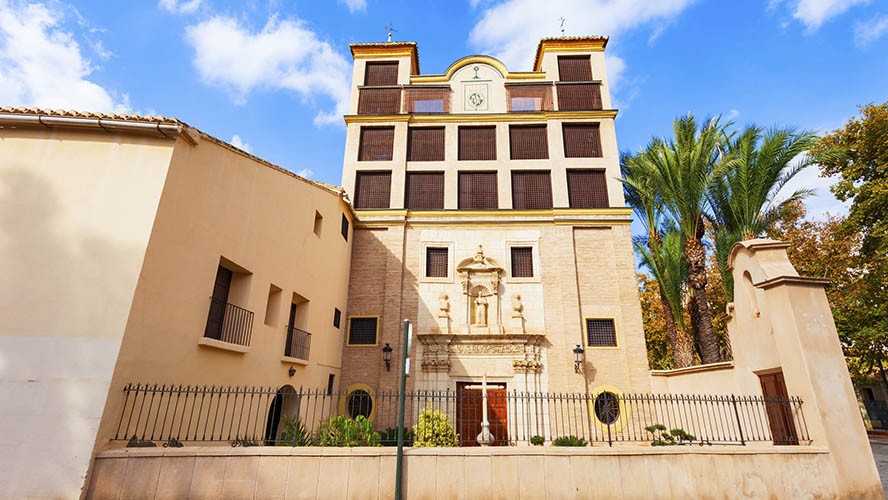
The doorway of the north hall of the palace can also be seen in the portico leading to the courtyard. A fountain has been restored in the centre, which must have been connected to the pool. Inside the palace hall, the original plasterwork and the vaulted ceilings where royal audiences were supposedly held have been preserved. The ornamental inscriptions in red-blue tones and the mouldings with motifs typical of Islamic art still remain. From the Mardanīsh palace, the remains of a long rectangular courtyard and some of the most famous carved plasterwork in the Museum of Santa Clara, such as La Flautista, have been brought to light.
The convent’s architecture, financed in the 15th century by the Catholic Monarchs and the great families of the kingdom, such as the Pacheco and Fajardo families, is also worth mentioning. The aim was to turn the appearance of the palace into a monastery thanks to the Gothic archways and the attached arches.
Of this early late Gothic church, only the choir loft remains, where the paintings stand out. Although they were done in the 16th century, they retain Gothic motifs such as the fight against darkness with its six impressive dragons with their mouths open.
The façade of the present church, in a baroque style, is one of the best-known images of the monastery. Inside, the rococo plasterwork that makes up the main decoration and the dome of the transept stand out. In the part of the Museum of Sacred Art, you can enjoy some sculptures by Salzillo, Murcia’s most prominent artist.
Information for visitors
Visiting the Monastery of Santa Clara and its museum is free of charge. Please note that it’s closed on Mondays and that on Sundays and public holidays it’s only open from 10 a.m. to 1 p.m. The rest of the week, you can also visit it in the afternoon from 4 p.m. to 6.30 p.m.
They also organise guided tours with a prior reservation and, in July and August, there’s a special night-time tour at 10 p.m., which must also be booked in advance.





























































